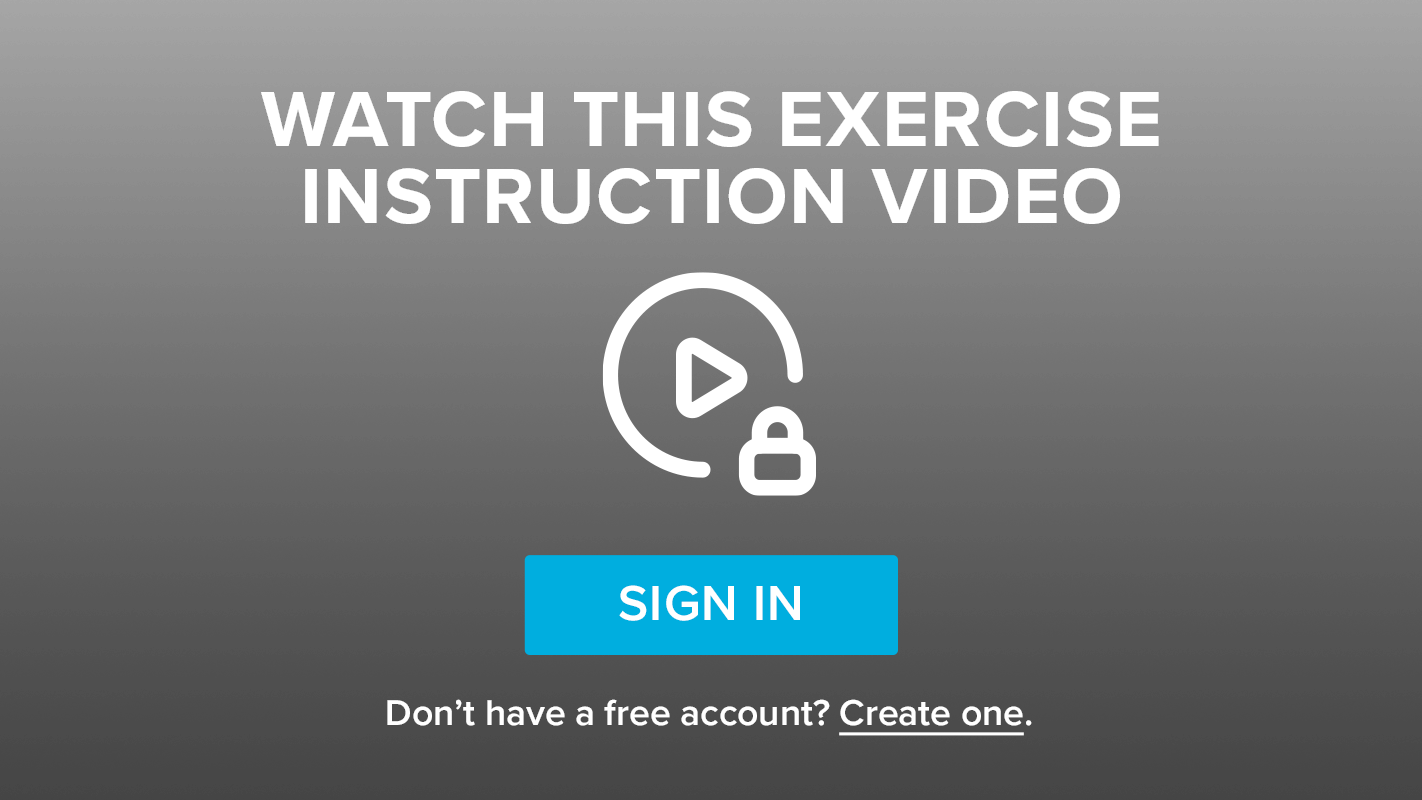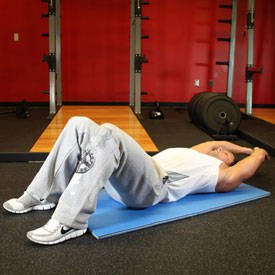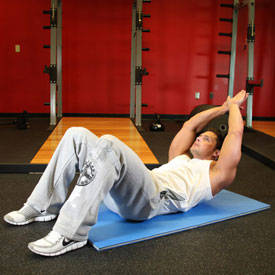Exercise ball crunch Images
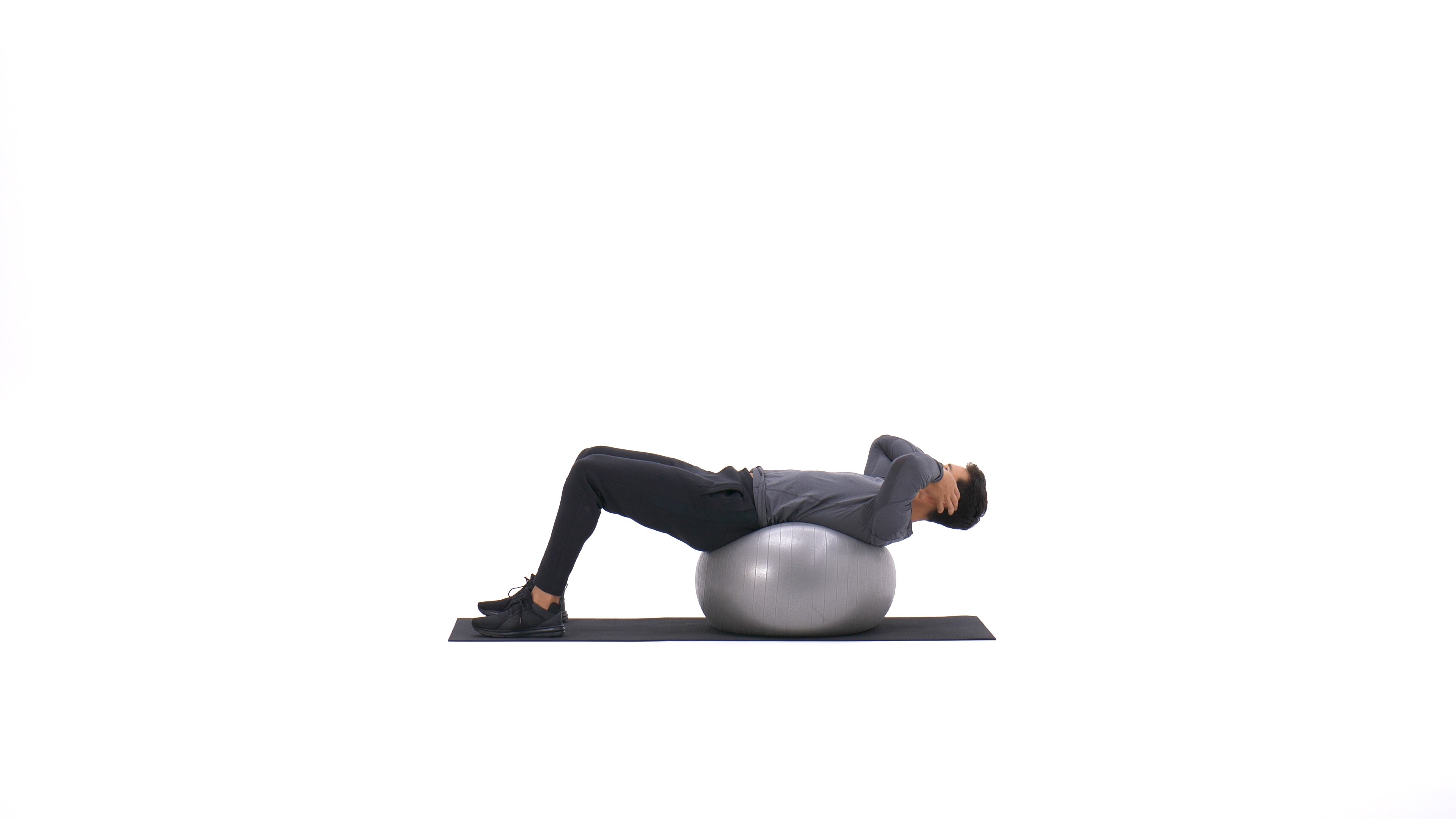
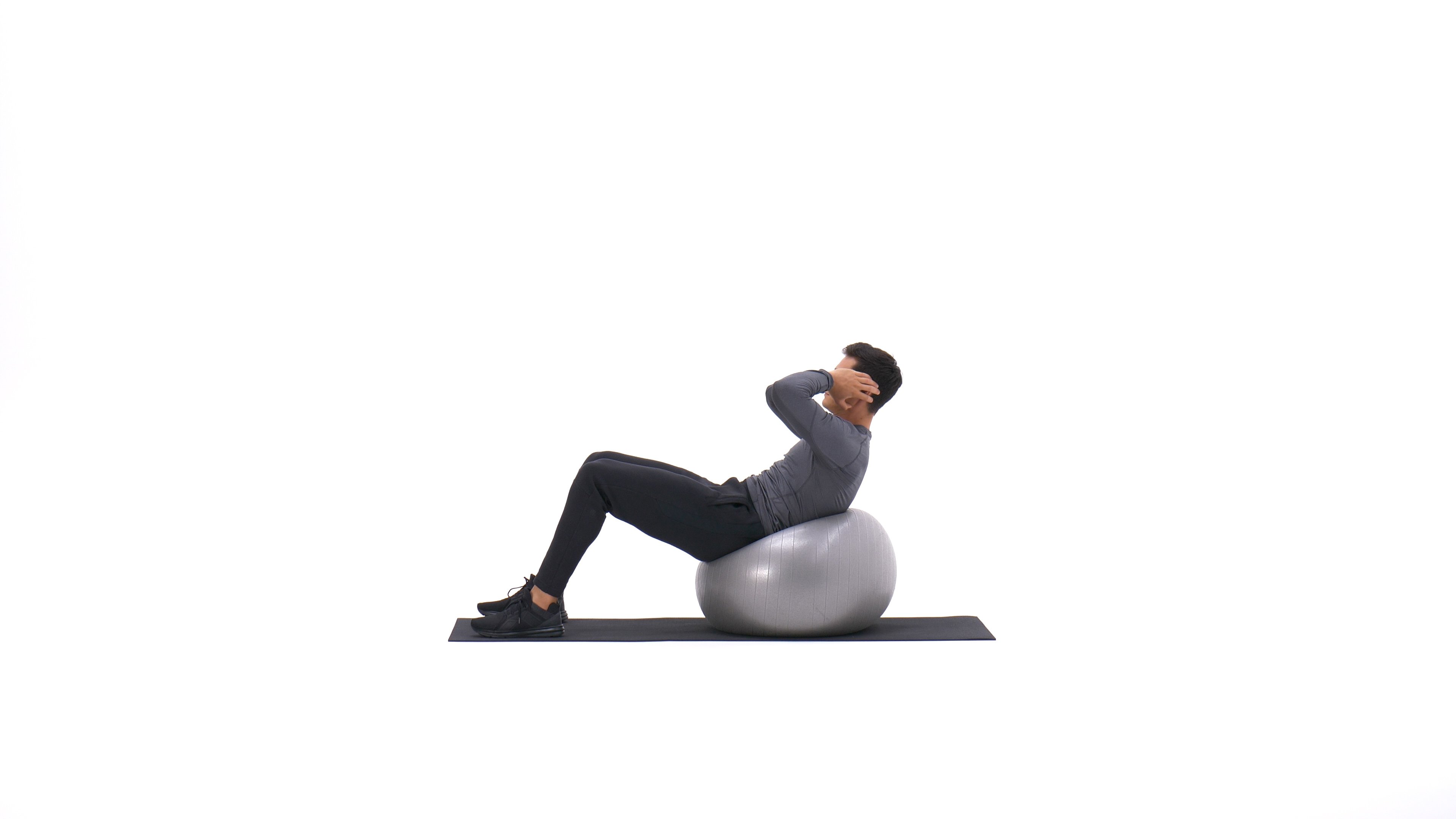
Exercise ball crunch Instructions
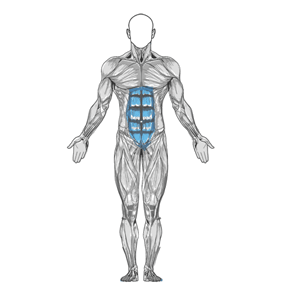
- Lie on an exercise ball with your lower back curvature pressed against the spherical surface of the ball. Your feet should be bent at the knee and pressed firmly against the floor. The upper torso should be hanging off the top of the ball. The arms should either be kept alongside the body or crossed on top of your chest as these positions avoid neck strains (as opposed to the hands behind the back of the head position).
- Lower your torso into a stretch position keeping the neck stationary at all times. This will be your starting position.
- With the hips stationary, flex the waist by contracting the abdominals and curl the shoulders and trunk upward until you feel a nice contraction on your abdominals. The arms should simply slide up the side of your legs if you have them at the side or just stay on top of your chest if you have them crossed. The lower back should always stay in contact with the ball. Exhale as you perform this movement and hold the contraction for a second.
- As you inhale, go back to the starting position.
- Repeat for the recommended amount of repetitions.
Caution: Perform this exercise slowly and deliberately as it takes some getting used to. Also, do not be hasty and try to use weights on the first time; you'll have enough on your hands learning how to balance yourself. Also, if balance is an issue I recommend having a spotter next to you and also placing each of your feet under a 100-lb dumbbell for added stability. As you get more advanced you can hold a dumbbell or a weight plate (held at arms length) on top of your chest. However, you have to be very careful when adding weight to this exercise, because if you add too much too quickly you could get a hernia.
Variations: You can perform this exercise with a low pulley behind you with a rope attached on its end. In this manner you can go ahead and add resistance easier. For this variation, you will need to hold on to the sides of the rope throughout the movement. I like to bring my arms forward to the point that the upper arms are almost parallel to my torso and the lower arms are facing back holding the rope.



